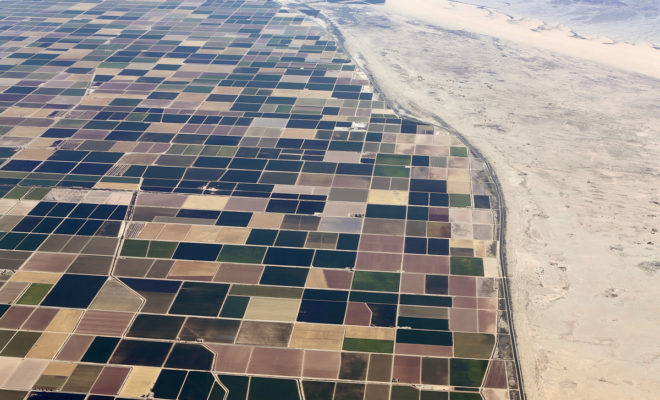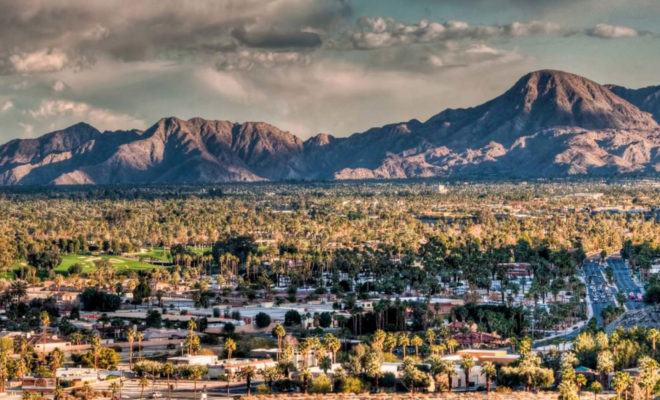Golf And Water: Seeing the Forest for the Trees

Everyone knows the idiom, “can’t see the forest for the trees.” It refers to the person, group or institution that becomes so focused on the parts of any problem that their failure to understand the whole of the problem condemns them to counterproductive actions. Everyone knows it, because it has been around since the 16th century, when English playwright John Heywood included it in a popular collection of proverbs. It has been used incessantly to describe every sort of situation in which persons, groups or institutions would be well-served to take a step back to better understand what is really going on, so that they might gain the perspective required to address whatever they are trying to tackle.
The phrase is almost always used pejoratively. But not always. It can just as easily be used to describe a situation so complicated by detail and seeming contradiction that laymen have little chance to understand it without guidance from those whose deep immersions in it allow them to translate it all into something resembling coherence — or with any luck, something that can be described as actionable intelligence.
The Southern California water situation circa summer 2023 is just such a situation — lots of details, lots of complications and even more contradictions than the details and complications combined, the chief one of which is how to understand how it is possible to be on drought watch and flood watch at the same time. Millions of trees obscuring the view of the water supply/situation forest and even more so, obscuring what it all means for the Southern California golf community.
Confused Yet?
If you’re confused by it all, you’re hardly alone.
I’m not sure I’m the person best qualified to translate these trees into some version of actionable understanding cum intelligence for the Southern California golf community — the explainer in chief as it were — but what follows is my best stab at that tall order.
More than half the water consumed by Southern California is imported. The rest comes from whatever local sources are available, e.g., groundwater, recycled water (nonpotable and potable), desalination, rivers/lakes — a localized affair in extremis.
The only major California city 100 percent dependent upon imports is San Francisco. Remind your Northern California friends of that the next time they criticize the importation propensities of Southern Californians.
The two main sources of Southern California’s imports come from the State Water Project (Sierra snowpack) and the Colorado River, both of which have been hollowed out in recent years by aridification, everyone’s new favorite word for the effects of a warming and drying climate.
The weather systems of the Sierra Nevada (Central and Northern California) and the Rocky Mountains (America’s Great Basin) are radically different. The Sierra Nevada Range has long been characterized by a high degree of volatility — that is, oscillations between dry years and wet years. But in today’s warmer and drier climate, there are more dry years than wet years, and the dry years have become not only more plentiful, but drier, and the wet years not only fewer, but much more extreme — so much so that scientists have begun referring to California’s climate less as one of permanent drought than permanent “whiplash.”
The Rockies are much more consistent — less oscillation between extremes than a steady drying out that yields less snow with each passing year. The last 25 years have been the Colorado Basin’s driest in 1,500 years, and there is nothing to indicate that the pattern won’t continue indefinitely.
California just enjoyed one of those extremely wet years. When the Sierra snowmelt is complete, which because of its sheer size will be later this year than any year in recent memory, the reservoirs will be full to the brim, lakes long dry will again look like lakes and flood control will be the order of the year, not drought management.
For the first time in 20 years all recipients of water from the State Water Project will receive 100 percent of their allocation. For comparison purposes, those allocations have been between 0 and 5 percent for the last three years. And it’s a good thing, a lucky thing really. And that’s the way we ought to understand it — a rare wet year in extremis that will allow the southern part of the state to endure the subsequent dry years that climatologists inform us are likely.
In short, a reprieve — a little breathing space to focus more on doing those things that bring us closer to longer-term water sustainability than worrying about how to cope with large cutbacks. For the state (all of us) that means making the huge investments necessary to capture and reuse stormwater, recycle wastewater for potable and nonpotable use and recharge aquifers — the storage mechanisms necessary to complement the 20th Century mechanisms that long ago reached their zenith.
Rely on Planning, Not Luck
For the golf community it means upping its investments in research, new technologies, turf removal, re-grassing and irrigation efficiency — the practices necessary to reduce consumption in order to tame water costs sure to explode to the degree to which these collective investments in 21st-century storage mechanisms will be paid in substantial part by ratepayers.
While luck smiled on the Rockies in the form of a solid precipitation year and did raise the levels of Lakes Mead and Powell a bit, it did nothing to change a collapsing dynamic in the Colorado Basin — the other major source of Southern California’s imported water. And that’s why the federal government has squeezed Arizona, California and Nevada into agreeing to voluntarily cede three million acre-feet of Colorado River water between now and 2026, when those three states and their four Upper Basin companions in the Colorado Compact (Idaho, Utah, Colorado and New Mexico) are set to enter into a new agreement about how to divvy up the spoils of the river.
But luck has smiled on that process as well — in three ways. First, the Sierra bounty has lessened domestic reliance on Colorado River imports. Second, the solid precipitation year in the Rockies has allowed the three Lower Basin states to get through 2026 ceding less water than originally envisaged. And third, because December’s Inflation Reduction Act (IRA) has provided $1.2 billion in subsidies to those suffering losses, California can probably restrict most of those losses to agriculture, where it is possible to simply pay farmers to fallow their fields on a temporary basis.
But this Colorado Basin “luck” is no different than the serendipity represented by this year’s extremely generous Sierra snowpack — a mere reprieve and a short one at that. Given that the current allocation rights in the extant “Compact” provide for roughly 17 million acre-feet of Colorado River water and Mother Nature now provides no more than 12-13 million-acre-feet per year, the 2026 haircut will have to cede more than three million acre-feet. It’s a matter of simple arithmetic.
And it’s this arithmetic in combination with the volatility of California’s warmer and drier climate that compels the golf community to accelerate its commitment to continued reductions in water use. The rest is commentary, or if you prefer, the trees that obscure the forest.











